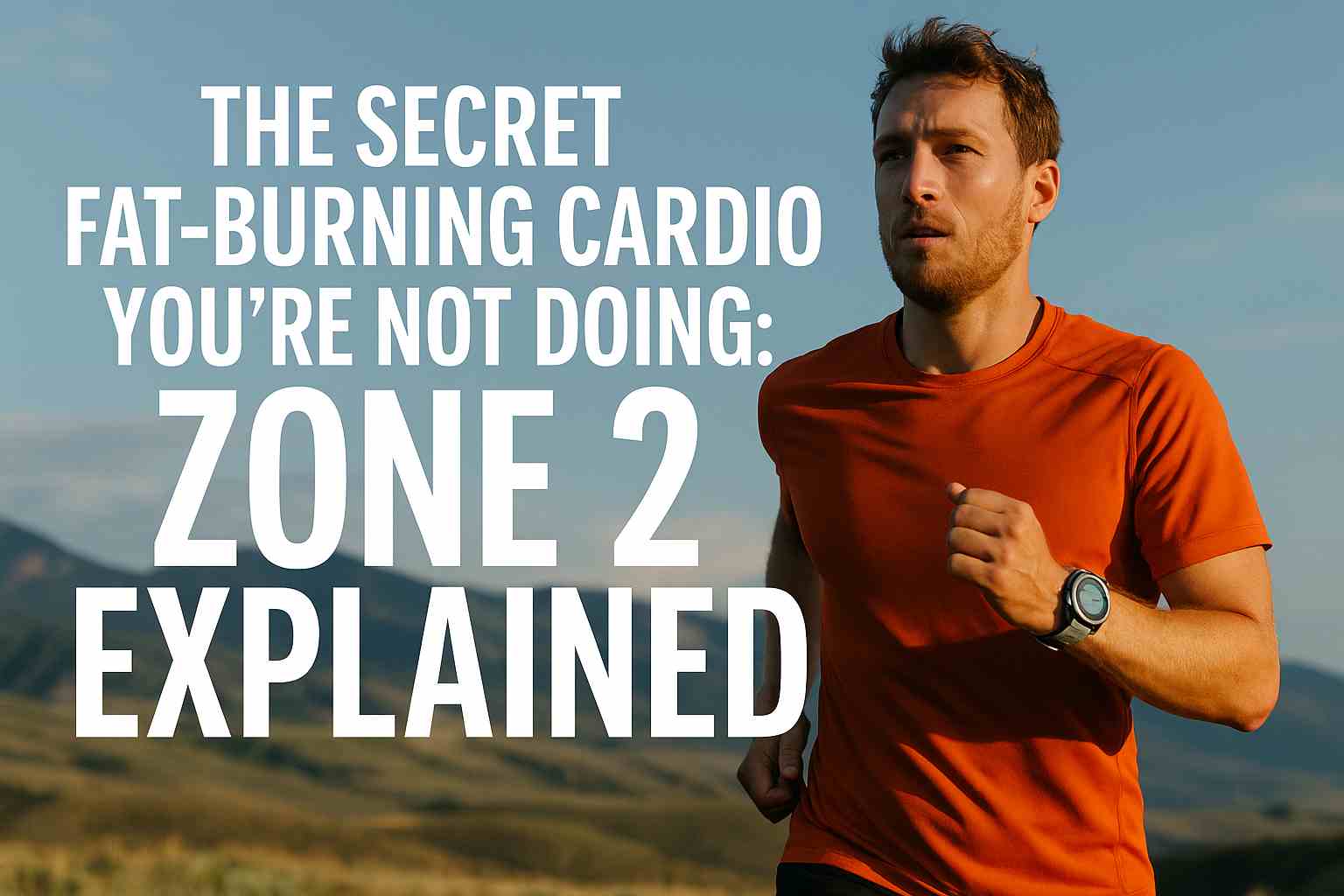Zone 2 cardio benefits: The Secret Fat-Burning Cardio You’re Not Doing.

Introduction: Not All Cardio is Created Equal(Zone 2 cardio benefits)
Most people assume that cardio means running on a treadmill until you’re gasping for air. But what if the best kind of cardio the kind that burns fat, boosts endurance, and doesn’t leave you miserable was something totally different?
Enter Zone 2 cardio: the secret weapon of elite athletes and longevity-focused biohackers.
In this guide, you’ll learn:
- What Zone 2 cardio actually is
- Why it’s a metabolic game-changer
- How to find your Zone 2 heart rate
- How to use it to burn fat and build endurance
- Why it’s perfect for beginners and pros alike
Let’s break it down.
You can also read: Fat Loss & Muscle Mass: Calorie Deficit, Strength Training, Diet Optimization & Lifestyle Factors.
What is Zone 2 Cardio?
Heart rate zones are categorized into five levels, based on intensity:
- Zone 1: Very light (easy walking)
- Zone 2: Light aerobic (sustainable, conversational)
- Zone 3: Moderate (starting to breathe harder)
- Zone 4: Hard (interval training range)
- Zone 5: Max effort (sprinting)
Zone 2 is where fat-burning magic happens. It’s low-intensity aerobic training that keeps your heart rate between 60–70% of your max heart rate. It’s the sweet spot between too easy and too hard.
Why Zone 2 is the Fat-Burning Sweet Spot
At Zone 2 intensity, your body uses fat as its primary fuel source. Here’s zone 2 cardio benefits:
- You increase mitochondrial density (the power plants of your cells)
- You improve your metabolic flexibility
- You build aerobic endurance without cortisol overload
- You train your heart to work more efficiently
Most people skip Zone 2 and go straight to HIIT. But that’s a mistake. Without a solid Zone 2 foundation, your metabolism stays inefficient and your fat loss plateaus.
Zone 2 is slow but it’s the smart way to get lean.
How to Calculate Your Zone 2 Heart Rate
Use this formula:
220 – your age = max heart rate (MHR)
Zone 2 = 60% to 70% of MHR
Example:
- If you’re 30 years old:
- Max HR = 220 – 30 = 190
- Zone 2 = 114–133 beats per minute
Use a smartwatch or chest strap to stay in this range during workouts.
Bonus Tip: If you can talk in full sentences while moving you’re probably in Zone 2.
How to Do a Zone 2 Workout
You can do Zone 2 training with almost any activity that is one of zone 2 cardio benefits:
- Brisk walking
- Easy jogging
- Light cycling
- Rowing machine
- Elliptical
- Swimming at a comfortable pace
Sample Routine:
- Warm-up: 5–10 minutes of light movement
- Zone 2: 30–60 minutes at your Zone 2 heart rate
- Cool down: 5–10 minutes light stretching
Start with 3 sessions per week and build up to 4–5 as you adapt.
Common Mistakes in Zone 2 Training
1. Going Too Hard
Most people push into Zone 3 or higher without realizing it. Stay honest with your heart rate.
2. Not Enough Time
Zone 2 is all about time under tension. 10 minutes isn’t enough. Aim for at least 30 minutes.
3. Skipping It Entirely
Many gym-goers avoid low-intensity cardio because it feels too easy. But that ease is exactly why it works.
Benefits Beyond Fat Loss
Zone 2 cardio doesn’t just help you lean out. It also:
- Improves insulin sensitivity
- Lowers resting heart rate
- Increases VO2 max (a measure of fitness)
- Boosts endurance for other workouts
- Enhances recovery by increasing circulation
It’s one of the few training styles that actually supports longevity.
How Long Until You See Results?
Results depend on consistency. But within 3–4 weeks to maximize zone 2 cardio benefits, most people notice:
- More energy during the day
- Better recovery from workouts
- Reduced bloating and inflammation
- Slight drop in weight and body fat
By 6–8 weeks, you’ll feel fitter, leaner, and more conditioned all without burning out.
Zone 2 for Athletes vs. Beginners
- Beginners: It’s the safest and most effective entry point to exercise.
- Intermediates: It fills the gap between strength training and HIIT.
- Athletes: It builds the endurance base needed to crush high-intensity work.
If you’re not doing Zone 2, you’re leaving gains on the table.
FAQs About Zone 2 Cardio
Q: Is walking enough for Zone 2?
A: Yes if your heart rate gets into the Zone 2 range.
Q: Do I have to do it fasted?
A: No, but some people prefer fasted Zone 2 for better fat oxidation.
Q: Can I combine Zone 2 with weight training?
A: Absolutely. Just do them on separate days or separate them by several hours.
Final Thoughts: Slow is Strong
Zone 2 cardio won’t give you instant gratification. It won’t leave you drenched in sweat. But it will (zone 2 cardio benefits):
- Burn fat efficiently
- Improve your metabolism
- Boost heart health
- Keep you consistent
And most importantly it’s sustainable.
If you’re serious about results that last, stop chasing extremes. Start training smarter.
Add Zone 2 to your weekly routine and feel the difference.
This is an important part of my book about nutrition and metabolism: “Nutrition, Metabolism & Muscle”. I discussed more about health tips and also home workouts in the book





